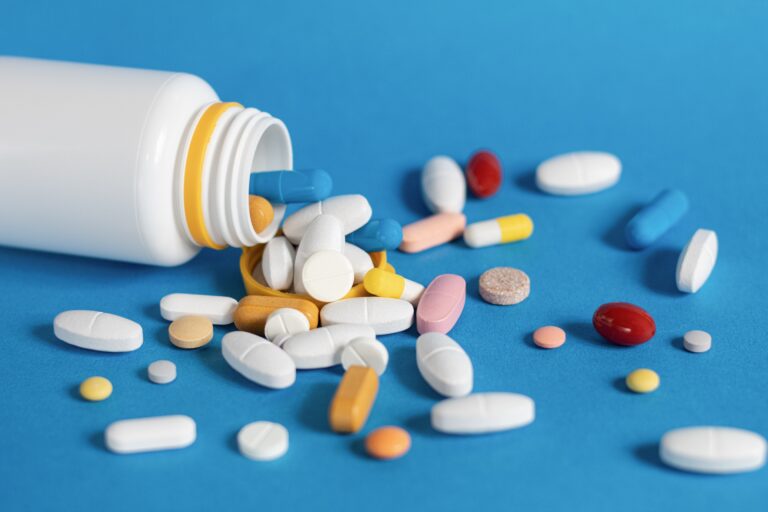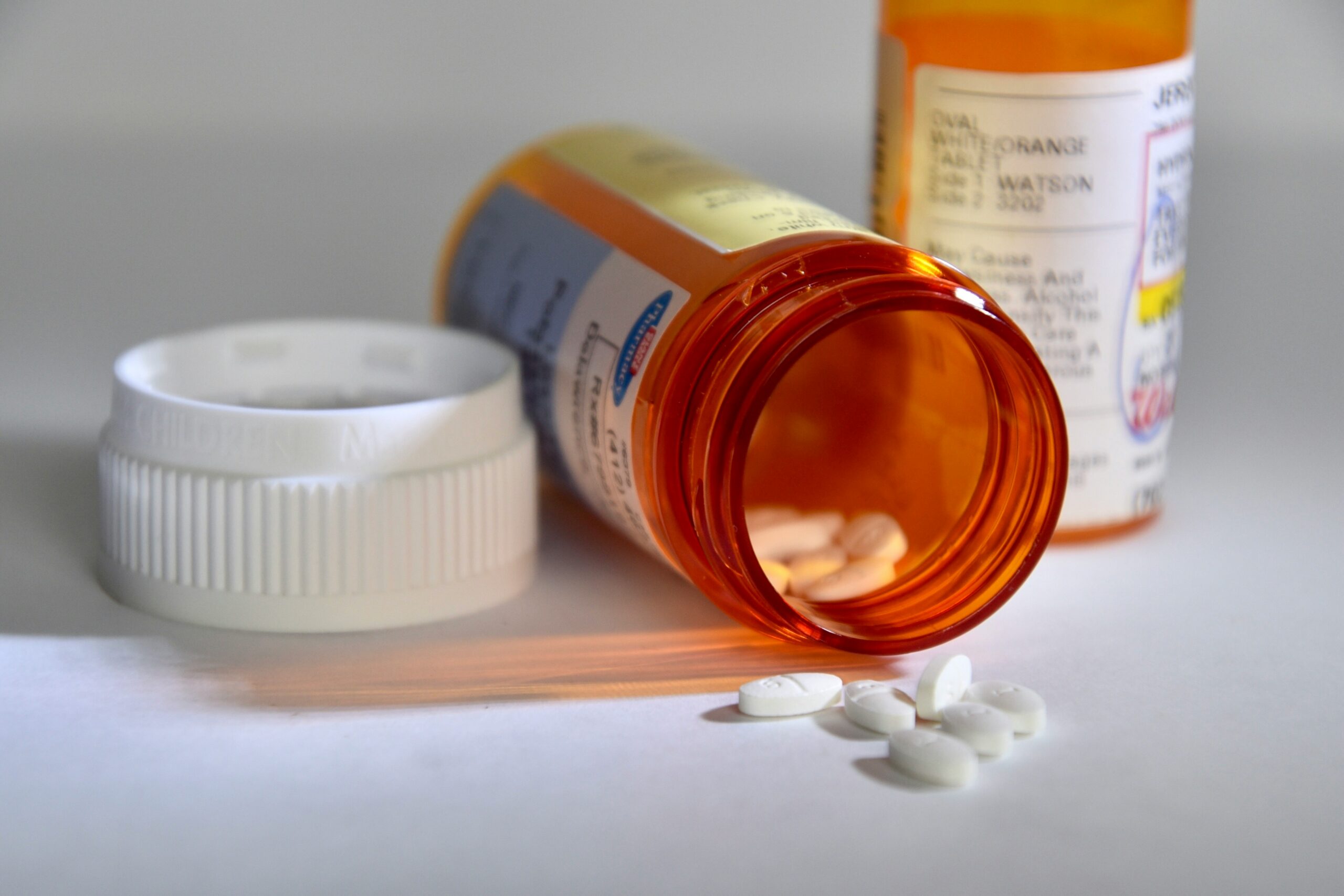Understanding Addiction in North Carolina: Effects of Fentanyl, Opioids, Meth, Alcohol, and Cocaine on the Body and Pathways to Recovery
Whether you’re seeking information for yourself, a loved one, or a professional referral, this article gives you a detailed breakdown of five major substances — fentanyl, opioids, methamphetamine, alcohol, and cocaine — how each one negatively affects the body and mind, and what recovery and treatment options exist, especially in North Carolina.
We also cover the critical topic of mental health and addiction (co-occurring disorders or dual diagnosis).
Throughout the piece you’ll find references to trusted treatment pathways such as our addiction rehab services, and more specialized programs like opioid rehab, alcohol addiction treatment in Asheville, as well as different formats of care (partial hospitalization, intensive outpatient, day treatment) and tailored programs for men, women, and families.
The aim is to provide you with a go-to resource for substance abuse treatment in North Carolina.

What is Fentanyl and Why It’s So Dangerous for Those Seeking Drug Treatment Centers in Asheville, North Carolina
Fentanyl is a powerful synthetic opioid analgesic used medically for severe pain, but in recent years it has become a major driver of overdose deaths and addiction. According to the Centers for Disease Control and Prevention (CDC), most recent fatalities are linked to illegally manufactured fentanyl rather than prescription forms.
Short-term Fentanyl effects: Even a single use can have serious consequences. When fentanyl activates opioid receptors throughout the brain and body, it can produce euphoria, drowsiness, confusion, nausea, vomiting, dry mouth, itching, sweating — and more seriously, respiratory depression (slowed or stopped breathing) which can lead to hypoxia, coma or death.
Long-term Fentanyl effects and risks: Over time, fentanyl misuse leads to tolerance (needing more to get the same effect), dependence (the body adapts), and addiction (compulsive use despite harm). Long-term misuse also carries risks of respiratory damage, brain oxygen deprivation (due to slowed breathing), increased infectious disease risk (especially if injecting), financial/relationship/job problems, and very high overdose potential. The very high potency — 50-100 × more potent than morphine in many cases — means even tiny amounts can kill.
| Substance | Relative Addictiveness | How Addiction Develops | Withdrawal Severity | Overdose Risk | Sources |
|---|---|---|---|---|---|
| Fentanyl | Extremely High | Binds rapidly to opioid receptors; produces intense euphoria and physical dependence within days of use. | Severe — includes intense cravings, muscle pain, nausea, and insomnia. | Very High — only a few milligrams can be fatal due to potency. | NIDA |
| Other Opioids (Heroin, Oxycodone, etc.) | Very High | Activate the brain’s reward centers; tolerance develops quickly, leading to compulsive use. | Severe — flu-like symptoms, anxiety, and intense cravings. | High — respiratory depression common in overdoses. | NIDA |
| Methamphetamine | Very High | Floods the brain with dopamine; causes rapid dependence and strong psychological addiction. | Moderate to Severe — fatigue, depression, and intense drug cravings. | Moderate to High — due to cardiovascular strain and hyperthermia. | NIDA |
| Cocaine | High | Blocks dopamine reuptake, creating a short-lived euphoria and reinforcing binge use. | Moderate — depression, sleep issues, and strong cravings. | High — risk increases when combined with other drugs. | NIDA |
| Alcohol | Moderate to High | Enhances GABA activity and dopamine release; tolerance and dependence build gradually with chronic use. | Severe — tremors, anxiety, seizures, and delirium tremens (can be life-threatening). | Moderate — overdose possible with excessive consumption or mixing with depressants. | NIDA |
Fentanyl is highly addictive because it is an ultra-potent synthetic opioid (roughly 50–100× stronger than morphine) that rapidly binds to the brain’s opioid receptors, producing intense euphoria and powerful pain relief. With repeated exposure, the brain adapts, driving tolerance (needing more to get the same effect) and physical dependence; this cycle increases the risk of developing opioid use disorder and makes quitting difficult due to severe withdrawal symptoms. See the National Institute on Drug Abuse (NIDA) overview of fentanyl for details on potency, effects, tolerance, and addiction.
Illicit fentanyl further amplifies addiction risk because it is often mixed—sometimes unknowingly—into other drugs, making doses more potent and unpredictable. This increases the likelihood of rapid dependence, compulsive use, and overdose. The CDC’s fentanyl facts page explains how illegally made fentanyl’s extreme potency makes drugs “more addictive and more dangerous,” and why many overdoses involve fentanyl today.
How Fentanyl affects the body:
- Respiration and brain oxygenation: The most critical risk is respiratory depression, which starves the brain of oxygen (hypoxia) and can produce permanent brain damage or death.
- Neurological/brain function: Over time, the brain’s reward and pain pathways are hijacked. The user may have impaired decision-making, memory problems, low mood when not using, and increased vulnerability to brain injury due to hypoxia.
- Gastrointestinal and endocrine systems: Chronic use can lead to constipation, bowel dysfunction, hormone disruptions (e.g., adrenal insufficiency for opioids broadly) and other organ stress.
- Immune/infection risk: If injecting, risk of HIV, hepatitis C, abscesses; plus general immune suppression from misuse.
Fentanyl Use: Timeline vs. Severity of Negative Health Effects
This visualization shows how severity can escalate rapidly with fentanyl exposure. Overdose risk is present at all stages and spikes with higher potency, mixing with depressants (e.g., alcohol/benzodiazepines), and loss of tolerance.
- First exposure (minutes–hours): Euphoria/sedation with immediate risk of respiratory depression and overdose.
- Hours–Days: Short-term adverse effects (nausea, confusion, itching); hypoxia risk with slowed breathing.
- Days–Weeks: Rapid tolerance; dependence can begin; overdose risk persists and may increase.
- Weeks–Months: GI/endocrine issues, mood changes off-drug, cognitive impacts; infection risk (if injecting).
- Months–Years: Ongoing high risk including hypoxic brain injury, organ strain, infectious disease, and fatal overdose.
Educational use only and not a medical diagnosis or treatment plan. If someone is unresponsive or not breathing: call 911 immediately and administer naloxone if available.
Need help now? See our opioid & fentanyl rehab, dual diagnosis care, or call (828) 827-4598.
Fentanyl Implications for treatment in North Carolina: Because fentanyl is so potent and lethal, when seeking substance abuse treatment (including drug rehab centers in Asheville, North Carolina) it’s crucial to work with a provider experienced in opioid use disorders and overdose risk.
At our addiction recovery center we provide medically-supervised detox, medication-assisted treatment (MAT), counseling, and referral to our specialized dual diagnosis treatment for those with co-occurring mental health issues.
What are the short-term effects of fentanyl?
Short-term Fentanyl effects: Even a single use can have serious consequences. When fentanyl activates opioid receptors throughout the brain and body, it can produce euphoria, drowsiness, confusion, nausea, vomiting, dry mouth, itching, and sweating — and more seriously, respiratory depression (slowed or stopped breathing) which can lead to hypoxia, coma, or death.
What are the long-term risks of fentanyl misuse?
Long-term Fentanyl effects and risks: Ongoing misuse leads to tolerance (needing more for the same effect), dependence (the body adapts), and addiction (compulsive use despite harm). Long-term misuse also raises risks for respiratory damage, brain oxygen deprivation from slowed breathing, increased infectious disease risk (especially with injection), financial and relationship problems, and a very high overdose potential. Its very high potency — roughly 50–100× more potent than morphine — means even tiny amounts can be lethal.
To build long-term stability, we pair evidence-based care with step-down support like aftercare and extended recovery.
How does fentanyl affect the body and brain?
- Respiration & brain oxygenation: The most critical risk is respiratory depression, which starves the brain of oxygen (hypoxia) and can cause permanent brain damage or death.
- Neurological/brain function: Over time, reward and pain pathways are hijacked. People may experience impaired decision-making, memory issues, low mood when not using, and greater vulnerability to brain injury due to hypoxia.
- Gastrointestinal & endocrine systems: Chronic use can lead to constipation, bowel dysfunction, and hormone disruptions (e.g., adrenal insufficiency seen with opioids broadly).
- Immune/infection risk: Injection use raises risks of HIV, hepatitis C, and abscesses, and misuse can contribute to broader immune suppression.
How can I recognize and respond to a fentanyl overdose?
Common signs: Very slow or stopped breathing, blue/gray lips or fingertips, unresponsiveness, pinpoint pupils, gurgling/snoring sounds.
- Call 911 immediately.
- Administer naloxone (Narcan) if available; repeat per instructions.
- Provide rescue breathing if trained and it’s safe.
- Stay with the person until help arrives.
What are effective treatment options in North Carolina for fentanyl addiction?
Comprehensive treatment often includes medically supervised detox, medication-assisted treatment (MAT) for opioids (e.g., buprenorphine), evidence-based therapies (CBT, DBT, trauma-informed care), and step-down support. At OR-NC, we offer:
- Opioid rehab (including fentanyl)
- Day Treatment, PHP, and IOP
- Men’s program and Women’s program
- Family counseling, Aftercare, and Extended care
Start with our addiction rehab overview or contact admissions at (828) 827-4598.
Key takeaway: If you or a loved one uses fentanyl (or substances that may be contaminated with fentanyl) you need immediate, evidence-based care. Visit our main addiction rehab page to learn about our programs and contact us today at (828) 827-4598.

Understanding Opioids and Their Effects on the Body Opioid Rehab & Treatment Programs in North Carolina
The term “opioids” refers to prescription pain-relievers (such as oxycodone, hydrocodone, morphine) as well as illicit substances like heroin.
Because they bind to opioid receptors throughout the brain and body, they affect functions like breathing, mood, pain, reward, gastrointestinal function and stress responses.
Short-term Opioid effects: Opioid use may lead to euphoria, sedation, slowed breathing, drowsiness, confusion, constipation, nausea/vomiting, and impaired coordination. Even in short-term use, the risk of overdose (especially when combined with alcohol or other depressants) is high.
Long-term Opioid effects and risks: Chronic opioid use can alter brain structure and function, reduce cognitive ability, decrease motivation, cause hormonal and immune dysfunction, damage respiratory systems, and increase risk of overdose. Specific physical risks include adrenal insufficiency, bowel dysfunction, slowed breathing, cardiovascular complications.
| Substance | Relative Addictiveness | How Addiction Develops | Withdrawal Severity | Overdose Risk | Sources |
|---|---|---|---|---|---|
| Fentanyl | Extremely High | Binds rapidly to opioid receptors; produces intense euphoria and physical dependence within days of use. | Severe — includes intense cravings, muscle pain, nausea, and insomnia. | Very High — only a few milligrams can be fatal due to potency. | NIDA |
| Other Opioids (Heroin, Oxycodone, etc.) | Very High | Activate the brain’s reward centers; tolerance develops quickly, leading to compulsive use. | Severe — flu-like symptoms, anxiety, and intense cravings. | High — respiratory depression common in overdoses. | NIDA |
| Methamphetamine | Very High | Floods the brain with dopamine; causes rapid dependence and strong psychological addiction. | Moderate to Severe — fatigue, depression, and intense drug cravings. | Moderate to High — due to cardiovascular strain and hyperthermia. | NIDA |
| Cocaine | High | Blocks dopamine reuptake, creating a short-lived euphoria and reinforcing binge use. | Moderate — depression, sleep issues, and strong cravings. | High — risk increases when combined with other drugs. | NIDA |
| Alcohol | Moderate to High | Enhances GABA activity and dopamine release; tolerance and dependence build gradually with chronic use. | Severe — tremors, anxiety, seizures, and delirium tremens (can be life-threatening). | Moderate — overdose possible with excessive consumption or mixing with depressants. | NIDA |
Opioids are highly addictive substances that work by binding to receptors in the brain and spinal cord to block pain and produce intense feelings of pleasure and relaxation. Over time, the brain adapts to the presence of opioids, leading to tolerance—meaning higher doses are needed to achieve the same effect—and dependence, where withdrawal symptoms occur if use stops. This cycle can quickly escalate into opioid use disorder (OUD), a chronic, relapsing condition characterized by compulsive drug seeking and use despite harmful consequences. The National Institute on Drug Abuse (NIDA) notes that prescription opioids, heroin, and synthetic opioids like fentanyl all share this addictive potential.
The addictive nature of opioids stems from their powerful effect on the brain’s reward system, flooding it with dopamine and reinforcing the urge to use repeatedly. Even short-term use can lead to physical dependence, and withdrawal symptoms such as anxiety, muscle pain, nausea, and insomnia can make quitting extremely difficult without medical support. According to the Centers for Disease Control and Prevention (CDC), misuse of opioids remains a major public health issue in the United States, contributing to tens of thousands of overdose deaths each year due to their potency and high potential for addiction.
How Opioids affect the body:
- Brain and reward pathways: Opioids blunt the brain’s own endorphin system, causing the brain to require the drug to feel normal; this rewiring makes quitting difficult.
- Respiratory system: By depressing the respiratory center in the brain, opioids can slow breathing to dangerously low levels, resulting in hypoxia and brain damage or death.
- Gastrointestinal tract: Constipation is a very common long-term effect. Bowel obstruction risk increases with chronic use.
- Hormones and immunity: Long-term use may lead to reduced adrenal function, lower sex hormones, impaired immune response.
Opioid Use: Timeline vs. Severity of Negative Health Effects
Overdose risk is present at any time with opioids, especially when potency is unknown, doses escalate, or opioids are mixed with depressants (alcohol/benzodiazepines).
- First exposure: Euphoria/sedation with immediate risk of respiratory depression and overdose.
- Hours–Days: Drowsiness, confusion, nausea/vomiting, constipation, impaired coordination; hypoxia risk with slowed breathing.
- Days–Weeks: Tolerance and dependence; dose escalation; ongoing overdose risk.
- Weeks–Months: Endocrine changes (adrenal/sex hormones), GI dysfunction (constipation/bowel issues), mood/cognition impacts.
- Months–Years: Respiratory damage, hypoxic brain injury, cardiovascular complications, infectious disease (if injecting), and persistent fatal overdose risk.
Educational use only; not medical advice. If someone is unresponsive or not breathing: call 911 immediately and administer naloxone if available.
Need help now? See our opioid rehab, dual diagnosis care, or call (828) 827-4598.
Opioid Treatment options in North Carolina: If you’re searching for “opioid rehab” or “drug treatment centers Asheville NC,” our specialized program at our facility includes medication-assisted therapy (e.g., buprenorphine, methadone), individual and group counseling, and transitions into our formats like Partial Hospitalization Program (PHP), Intensive Outpatient Program (IOP), and Day Treatment.
What are the short-term effects of opioid use?
Short-term opioid effects: Opioid use may lead to euphoria, sedation, slowed breathing, drowsiness, confusion, constipation, nausea/vomiting, and impaired coordination. Even with short-term use, the risk of overdose is high — especially when combined with alcohol or other depressants.
What are the long-term risks of opioids?
Long-term opioid effects and risks: Chronic use can alter brain structure and function, reduce cognitive ability, decrease motivation, and cause hormonal and immune dysfunction. Physical risks include adrenal insufficiency, bowel dysfunction, slowed breathing, and cardiovascular complications, alongside an elevated overdose risk.
Long-term recovery improves with step-down support like aftercare and extended care.
How do opioids affect the body and brain?
- Brain & reward pathways: Opioids blunt the brain’s endorphin system, rewiring reward circuits so the drug is needed to feel “normal,” making quitting difficult.
- Respiratory system: Opioids depress the brain’s breathing center, slowing respiration to dangerously low levels and risking hypoxia, brain damage, or death.
- Gastrointestinal tract: Constipation is common; with chronic use, bowel obstruction risk rises.
- Hormones & immunity: Long-term use may reduce adrenal function and sex hormones and impair immune response.
How can I recognize and respond to an opioid overdose?
Common signs: Very slow or stopped breathing, blue/gray lips or fingertips, pinpoint pupils, extreme drowsiness or unresponsiveness, gurgling/snoring sounds.
- Call 911 immediately.
- Administer naloxone (Narcan) if available; repeat per instructions.
- Provide rescue breathing if trained and safe to do so.
- Stay with the person until help arrives.
What are effective treatment options in North Carolina for opioid addiction?
Comprehensive care often includes medically supervised detox, medication-assisted treatment (MAT) (e.g., buprenorphine), evidence-based therapies (CBT, DBT, trauma-informed care), and a stepped continuum:
- Opioid rehab and addiction rehab overview
- Day Treatment, PHP, and IOP
- Men’s program and Women’s program
- Family counseling, Aftercare, and Extended care
Start a confidential conversation with admissions at (828) 827-4598 or visit our contact page.
Key takeaway: Opioid dependence is a medical condition that affects every system of the body. Early intervention yields better outcomes. If you’re in North Carolina, act now — contact our admissions team today at (828) 827-4598.

Why Methamphetamine Is So Harmful: What One Needs to Know for Meth Addiction Recovery in NC
Methamphetamine (meth) is a highly addictive stimulant drug that initially produces energy, euphoria and increased alertness — but at a huge cost. Over time it damages brain structure and multiple organ systems.
Short-term Meth effects: Meth use may lead to increased wakefulness, physical movement, decreased appetite, rapid heart rate, irregular heartbeat, increased blood pressure, paranoia, anxiety, agitation.
Long-term Meth effects and risks: Chronic meth use can cause severe weight loss, dental decay (“meth mouth”), skin lesions, confusion, memory loss, impaired learning, insomnia, mood disturbances, aggression, psychosis, and increased risk of stroke, heart disease and other organ damage. As one resource notes, meth can cause “permanent impact” on several systems.
| Substance | Relative Addictiveness | How Addiction Develops | Withdrawal Severity | Overdose Risk | Sources |
|---|---|---|---|---|---|
| Fentanyl | Extremely High | Binds rapidly to opioid receptors; produces intense euphoria and physical dependence within days of use. | Severe — includes intense cravings, muscle pain, nausea, and insomnia. | Very High — only a few milligrams can be fatal due to potency. | NIDA |
| Other Opioids (Heroin, Oxycodone, etc.) | Very High | Activate the brain’s reward centers; tolerance develops quickly, leading to compulsive use. | Severe — flu-like symptoms, anxiety, and intense cravings. | High — respiratory depression common in overdoses. | NIDA |
| Methamphetamine | Very High | Floods the brain with dopamine; causes rapid dependence and strong psychological addiction. | Moderate to Severe — fatigue, depression, and intense drug cravings. | Moderate to High — due to cardiovascular strain and hyperthermia. | NIDA |
| Cocaine | High | Blocks dopamine reuptake, creating a short-lived euphoria and reinforcing binge use. | Moderate — depression, sleep issues, and strong cravings. | High — risk increases when combined with other drugs. | NIDA |
| Alcohol | Moderate to High | Enhances GABA activity and dopamine release; tolerance and dependence build gradually with chronic use. | Severe — tremors, anxiety, seizures, and delirium tremens (can be life-threatening). | Moderate — overdose possible with excessive consumption or mixing with depressants. | NIDA |
Methamphetamine is an extremely addictive stimulant that powerfully affects the central nervous system by increasing levels of dopamine, the neurotransmitter responsible for pleasure, motivation, and reward. This surge in dopamine creates an intense and long-lasting euphoria, reinforcing repeated use and rapidly leading to dependence. According to the National Institute on Drug Abuse (NIDA), methamphetamine use quickly alters brain structure and function, damaging the dopamine system and impairing decision-making, memory, and impulse control — all of which make quitting very difficult.
With ongoing use, tolerance develops, meaning users need higher or more frequent doses to feel the same effects, increasing the risk of addiction and overdose. Chronic meth use can cause extreme weight loss, dental decay (“meth mouth”), skin sores, anxiety, paranoia, and hallucinations. The Centers for Disease Control and Prevention (CDC) reports that methamphetamine is one of the most addictive and dangerous drugs in the U.S., and its combination with opioids has significantly increased overdose deaths in recent years.
How Meth affects the body:
- Cardiovascular/heart: The stimulant effect forces the heart to work much harder — increased heart rate, high blood pressure, vessel spasms — which over time can lead to heart failure, stroke or aneurysm.
- Brain/cognition: Chronic use reduces verbal learning, coordination, memory; may lead to cognitive decline and psychiatric problems such as paranoia, hallucinations and violence.
- Physical appearance/skin/teeth: Extreme weight loss, skin sores and infections, rapid and severe dental decay.
- Immune/liver/kidney systems: Meth places heavy stress on organs; risk of infectious disease (especially if injecting), liver and kidney damage over time.
Methamphetamine Use: Timeline vs. Severity of Negative Health Effects
Severe health risks can occur early with meth (hyperthermia, arrhythmias, stroke). Chronic exposure raises risks of psychosis, cognitive decline, organ damage, and death.
- First exposure: Wakefulness, elevated heart rate and blood pressure; risks of hyperthermia, arrhythmias, and stroke can appear early.
- Hours–Days: Reduced appetite, paranoia/anxiety, irregular heartbeat; severe complications include seizures, overheating, and cardiac events.
- Days–Weeks: Binge patterns, sleep loss, escalating agitation; rising risk of psychosis and unsafe behaviors.
- Weeks–Months: Cognitive/memory impairments, mood disturbances, insomnia; increased cardiovascular risk; lesions and dental decay emerge.
- Months–Years: Severe weight loss, “meth mouth,” infections, psychosis/aggression; organ strain (liver/kidney); stroke/heart disease; death risk persists.
Educational use only; not medical advice. For emergencies: call 911 immediately. After stabilization, structured treatment (PHP/IOP/Aftercare) can reduce health risks and relapse.
Considering help? Review our addiction rehab programs or talk with admissions at (828) 827-4598.
Meth Treatment and recovery considerations in North Carolina: If you or someone you know is struggling with methamphetamine use, locating an addiction prevention program that offers stimulant-specific therapies, cognitive behavioral therapy (CBT), trauma-informed care and transitions into continuum-of-care formats (such as our Extended Addiction Recovery Care and Aftercare Treatment) is critical.
Searching for “substance abuse treatment near North Carolina” or “drug rehab in North Carolina” and choosing a center with experience in meth is key.
What are the short-term effects of meth use?
Short-term meth effects: Increased wakefulness and physical activity, decreased appetite, rapid heart rate, irregular heartbeat, elevated blood pressure, and changes in mood such as paranoia, anxiety, and agitation.
What are the long-term risks of chronic meth use?
Long-term meth effects and risks: Severe weight loss, dental decay (“meth mouth”), skin lesions, confusion, memory loss, impaired learning, insomnia, mood disturbances, aggression, psychosis, and higher risk of stroke, heart disease, and other organ damage. Meth can cause lasting impact across multiple systems.
Recovery outcomes improve with ongoing support like aftercare and extended recovery.
How does meth affect the body and brain over time?
- Cardiovascular/heart: Stimulant stress increases heart rate and blood pressure and can trigger vessel spasms, raising risk of heart failure, stroke, or aneurysm.
- Brain/cognition: Reduced verbal learning, coordination, and memory; elevated risk of paranoia, hallucinations, and violent behavior.
- Physical appearance/skin/teeth: Extreme weight loss, skin sores/infections, and rapid, severe dental decay.
- Immune/liver/kidney: High systemic stress with increased infectious disease risk (especially if injecting) and potential liver/kidney damage over time.
How can I recognize and respond to a methamphetamine overdose or acute crisis?
Warning signs: Chest pain, severe headache, very high body temperature, seizures, extreme agitation or confusion, loss of consciousness, or signs of stroke/heart attack.
- Call 911 immediately.
- Keep the person safe from injury; move hazards away.
- Cool the body if overheating (fan, cool cloths) until help arrives.
- If unresponsive and not breathing normally, begin CPR if trained.
What treatment options work best for meth addiction in North Carolina?
Effective care is comprehensive and may include medically monitored stabilization, evidence-based therapies (CBT, contingency management, trauma-informed care), and a stepped continuum to maintain gains:
- Addiction rehab overview with individualized treatment planning
- Partial Hospitalization (PHP), Intensive Outpatient (IOP), and Day Treatment
- Men’s program, Women’s program, and Family counseling
- Aftercare and Extended care for sustained recovery
Start a confidential conversation with admissions at (828) 827-4598 or contact us online.
Key takeaway: Methamphetamine may feel like power and euphoria initially — but it causes sweeping damage across the body and brain. Early, comprehensive treatment is essential.

How Alcohol Affects the Body: Risks, Damage and What to Know for Alcohol Addiction Treatment Asheville, NC
Alcohol is legal, socially accepted, and ubiquitous — which sometimes gives a false sense of safety. But the truth is that heavy or chronic alcohol use can severely damage nearly every organ system. Even moderate drinking carries risks.
Short-term Alcohol effects: Immediate effects may include impaired judgment and coordination, slowed reaction time, lowered inhibition, dehydration, nausea/vomiting, risk of alcohol poisoning, and risky behavior including accidents and injuries.
Long-term Alcohol effects and risks: Chronic or heavy alcohol use can lead to brain shrinkage, loss of grey and white matter, cognitive impairment, mood disorders (depression/anxiety), liver disease (fatty liver, hepatitis, cirrhosis), cardiovascular disease, weakened immune system, pancreatitis, cancers (oral cavity, throat, liver, breast) and death.
| Substance | Relative Addictiveness | How Addiction Develops | Withdrawal Severity | Overdose Risk | Sources |
|---|---|---|---|---|---|
| Fentanyl | Extremely High | Binds rapidly to opioid receptors; produces intense euphoria and physical dependence within days of use. | Severe — includes intense cravings, muscle pain, nausea, and insomnia. | Very High — only a few milligrams can be fatal due to potency. | NIDA |
| Other Opioids (Heroin, Oxycodone, etc.) | Very High | Activate the brain’s reward centers; tolerance develops quickly, leading to compulsive use. | Severe — flu-like symptoms, anxiety, and intense cravings. | High — respiratory depression common in overdoses. | NIDA |
| Methamphetamine | Very High | Floods the brain with dopamine; causes rapid dependence and strong psychological addiction. | Moderate to Severe — fatigue, depression, and intense drug cravings. | Moderate to High — due to cardiovascular strain and hyperthermia. | NIDA |
| Cocaine | High | Blocks dopamine reuptake, creating a short-lived euphoria and reinforcing binge use. | Moderate — depression, sleep issues, and strong cravings. | High — risk increases when combined with other drugs. | NIDA |
| Alcohol | Moderate to High | Enhances GABA activity and dopamine release; tolerance and dependence build gradually with chronic use. | Severe — tremors, anxiety, seizures, and delirium tremens (can be life-threatening). | Moderate — overdose possible with excessive consumption or mixing with depressants. | NIDA |
Alcohol is one of the most commonly used and addictive substances in the United States. It affects the brain by increasing the effects of the neurotransmitter GABA, which produces feelings of relaxation, while simultaneously boosting dopamine levels in the brain’s reward center. Over time, repeated alcohol use causes the brain to adapt, reducing its natural production of these chemicals and leading to tolerance and dependence. According to the National Institute on Drug Abuse (NIDA), these changes can result in alcohol use disorder (AUD), a chronic disease characterized by an inability to control drinking despite negative consequences.
When someone who is dependent on alcohol stops drinking, they may experience withdrawal symptoms ranging from anxiety and tremors to seizures and delirium tremens, which can be life-threatening. The Centers for Disease Control and Prevention (CDC) notes that excessive alcohol use contributes to numerous health problems, including liver disease, heart issues, and mental health disorders, and remains a leading cause of preventable death in the U.S. The combination of physical dependence, social acceptance, and widespread availability makes alcohol a uniquely pervasive and dangerous addiction.
How Alcohol affects the body:
- Brain & nervous system: Alcohol disrupts neurotransmitters, impairs memory and learning, and heavy use can lead to long-term structural changes.
- Liver and digestive system: The liver metabolizes alcohol into acetaldehyde, a toxin that damages DNA and cells. Over time this leads to fibrosis, cirrhosis and increased cancer risk.
- Cardiovascular system: Heavy drinking raises blood pressure, increases risk of heart disease, stroke and cardiomyopathy.
- Immune and endocrine systems: Alcohol weakens immune defenses, disrupts hormone homeostasis, and elevates risk of infections and cancers.
Alcohol Use: Timeline vs. Severity of Negative Health Effects
Risk rises with dose, speed of drinking, and mixing with depressants (e.g., opioids, benzodiazepines). Acute alcohol poisoning can occur in a single session; chronic heavy use drives long-term organ damage and mortality.
- First drinks (minutes–hours): Impaired judgment/coordination, slowed reaction time, dehydration, nausea; accident risk rises immediately.
- Binge window (same session): Blackouts, vomiting, slowed breathing, low body temperature; alcohol poisoning can be fatal, especially with other depressants.
- Days–Weeks: Sleep disruption, mood changes, gastritis; with frequent heavy use, early tolerance/withdrawal (tremor, anxiety).
- Months: Fatty liver, hypertension, cardiomyopathy risk, pancreatitis, immune suppression; anxiety/depression and memory issues increase.
- Years: Hepatitis/cirrhosis, cardiovascular disease, multiple cancers, cognitive decline & brain atrophy; mortality risk increases.
Educational use only; not medical advice. If someone is unresponsive, breathing slowly/irregularly, or has blue lips/skin after drinking: call 911 immediately.
Considering treatment? See our alcohol addiction treatment in Asheville, dual diagnosis care, or call (828) 827-4598.
Alcohol Treatment in Asheville & North Carolina: For those looking for alcohol addiction treatment in Asheville or drug treatment centers in Asheville, North Carolina, our addiction and rehab center offers dedicated alcohol-use disorder programs, including medically-supervised detox, women’s or men’s rehab tracks (Women’s Rehab Program and Men’s Rehab Program), and comprehensive follow-up care via our aftercare and extended care programs.
What are the short-term effects of alcohol use?
Short-term alcohol effects: Impaired judgment and coordination, slowed reaction time, lowered inhibition, dehydration, nausea/vomiting, risk of alcohol poisoning, and risky behaviors including accidents and injuries.
What are the long-term risks of heavy or chronic alcohol use?
Long-term alcohol effects and risks: Brain shrinkage and cognitive impairment; mood disorders (depression/anxiety); liver disease (fatty liver, hepatitis, cirrhosis); cardiovascular disease; weakened immune system; pancreatitis; increased cancer risk (oral cavity, throat, liver, breast); and elevated mortality risk.
Sustainable recovery benefits from aftercare and extended recovery.
How does alcohol affect the brain and body?
- Brain & nervous system: Disrupts neurotransmitters, impairs memory/learning, and with heavy use can cause long-term structural changes.
- Liver & digestive system: Metabolism creates acetaldehyde (toxic), driving cellular DNA damage, fibrosis, cirrhosis, and higher cancer risk.
- Cardiovascular system: Raises blood pressure and risk for heart disease, stroke, and cardiomyopathy.
- Immune & endocrine systems: Weakens immune defenses, disrupts hormones, increasing infection and cancer risk.
How can I recognize and respond to alcohol poisoning or an acute emergency?
Warning signs: Confusion, vomiting, seizures, slow/irregular breathing, bluish skin, low body temperature, unconsciousness/unresponsive.
- Call 911 immediately.
- Keep the person on their side to prevent choking.
- Do not leave them alone or give food, drink, or coffee.
- Monitor breathing and responsiveness until help arrives.
What treatment options work best for alcohol use disorder in North Carolina?
Effective care pairs medical and therapeutic support with a stepped continuum:
- Alcohol addiction treatment (Asheville) and rehab overview
- Partial Hospitalization (PHP), Intensive Outpatient (IOP), and Day Treatment
- Men’s program, Women’s program, and Family counseling
- Aftercare and Extended care
Speak with admissions at (828) 827-4598 or contact us online.
Key takeaway: Because alcohol is legal and often socially normalized, its risks are underestimated — but the physical and mental damage accumulate, and treatment is as important as for illicit substances.

What Cocaine Does to the Body: A Deep Dive into the Risks and Treatment Pathways
Cocaine is a powerful stimulant derived from the coca plant, and though its high is fast-acting and short-lived, its damage can be long lasting.
Short-term Cocaine effects: Use of cocaine produces euphoria, increased energy, heightened alertness, reduced need for sleep or food, talkativeness, and increased heart rate/blood pressure. However it also leads to anxiety, restlessness, tremors, irritability, nausea, vomiting, seizures, heart arrhythmias, stroke, and even sudden death.
Long-term Cocaine effects and risks: Chronic cocaine use can cause dependence, tolerance, cognitive decline, memory and attention impairments, mood disorders (depression, paranoia, psychosis), severe cardiovascular problems (heart attack, stroke, arrhythmia), respiratory damage, gastrointestinal issues, nasal septum damage (if snorted), and high risk of overdose.
| Substance | Relative Addictiveness | How Addiction Develops | Withdrawal Severity | Overdose Risk | Sources |
|---|---|---|---|---|---|
| Fentanyl | Extremely High | Binds rapidly to opioid receptors; produces intense euphoria and physical dependence within days of use. | Severe — includes intense cravings, muscle pain, nausea, and insomnia. | Very High — only a few milligrams can be fatal due to potency. | NIDA |
| Other Opioids (Heroin, Oxycodone, etc.) | Very High | Activate the brain’s reward centers; tolerance develops quickly, leading to compulsive use. | Severe — flu-like symptoms, anxiety, and intense cravings. | High — respiratory depression common in overdoses. | NIDA |
| Methamphetamine | Very High | Floods the brain with dopamine; causes rapid dependence and strong psychological addiction. | Moderate to Severe — fatigue, depression, and intense drug cravings. | Moderate to High — due to cardiovascular strain and hyperthermia. | NIDA |
| Cocaine | High | Blocks dopamine reuptake, creating a short-lived euphoria and reinforcing binge use. | Moderate — depression, sleep issues, and strong cravings. | High — risk increases when combined with other drugs. | NIDA |
| Alcohol | Moderate to High | Enhances GABA activity and dopamine release; tolerance and dependence build gradually with chronic use. | Severe — tremors, anxiety, seizures, and delirium tremens (can be life-threatening). | Moderate — overdose possible with excessive consumption or mixing with depressants. | NIDA |
Cocaine is a highly addictive stimulant drug that powerfully affects the brain’s reward system by blocking the reabsorption of dopamine, resulting in an intense and short-lived feeling of euphoria, energy, and alertness. Because these effects wear off quickly, users often take repeated doses in rapid succession — a behavior known as binge use — which greatly increases the risk of addiction. According to the National Institute on Drug Abuse (NIDA), this rapid cycle of high and crash reinforces compulsive drug-seeking behavior and can quickly lead to cocaine use disorder.
Prolonged cocaine use alters brain chemistry and reduces the ability to experience pleasure from natural rewards, making recovery challenging without professional treatment. The Centers for Disease Control and Prevention (CDC) notes that cocaine’s strong stimulant properties also increase heart rate and blood pressure, raising the risk of stroke, heart attack, and sudden death. Because of its intense psychological grip and physical dangers, cocaine remains one of the most addictive and harmful illicit drugs in circulation today.
How Cocaine affects the body:
- Brain & nervous system: Cocaine dramatically increases dopamine in the brain, which creates the euphoria but also alters brain reward pathways, leading to addiction and reduced sensitivity to everyday pleasures.
- Cardiovascular system: Rapid heart rate, high blood pressure, vasoconstriction, coronary artery spasm, increased clot risk – all of which raise the risk of heart attack or stroke even in first-time users.
- Respiratory/digestive/organ systems: Smoking or injecting cocaine can damage lungs, lead to infections, reduce blood flow to the gastrointestinal tract causing ulcers or necrosis, nasal damage if snorted.
Cocaine Use: Timeline vs. Severity of Negative Health Effects
Acute cardiac and neurologic events (heart attack, arrhythmia, stroke, seizures) can occur even with first-time use. Risks rise with dose, rapid re-dosing (“binges”), dehydration/overheating, and mixing with other substances. Contamination (e.g., fentanyl) sharply increases fatality risk.
- First exposure: Euphoria/alertness with immediate risk of coronary spasm, arrhythmia, stroke, and seizures.
- Minutes–Hours (session): Anxiety, tremors, hyperthermia/dehydration; cardiac ischemia and seizures more likely during binges.
- Days–Weeks: Tolerance, compulsive re-dosing, anhedonia, insomnia; elevated accident risk.
- Weeks–Months: Cognitive decline, mood disorders; nasal septum damage (snorted), lung injury/infections (smoked/injected), GI ischemia/ulcers.
- Months–Years: Cardiomyopathy, arrhythmias, hypertension, stroke; memory/executive deficits; infection risks (injecting). Overdose risk persists and increases with contamination or polysubstance use.
Educational use only; not medical advice. If someone has chest pain, seizure, or stroke symptoms after cocaine use: call 911 immediately.
Considering treatment? Review our addiction rehab programs or talk with admissions at (828) 827-4598.
Cocaine Addiction Treatment in North Carolina: Our drug rehab facility offers stimulant-specific programming, group and individual therapy, dual diagnosis care (especially if cocaine use is paired with depression, anxiety or other mental health issues), and aftercare planning to maintain recovery gains.
What are the short-term effects of cocaine use?
Short-term cocaine effects: Euphoria, increased energy and alertness, reduced need for sleep or food, talkativeness, and elevated heart rate/blood pressure. Risks include anxiety, restlessness, tremors, irritability, nausea, vomiting, seizures, heart arrhythmias, stroke, and even sudden death.
What are the long-term risks of chronic cocaine use?
Long-term cocaine effects and risks: Dependence and tolerance; cognitive decline; memory and attention impairments; mood disorders (depression, paranoia, psychosis); severe cardiovascular problems (heart attack, stroke, arrhythmia); respiratory damage; gastrointestinal complications; nasal septum damage (if snorted); and a high risk of overdose.
Stability improves with ongoing supports like aftercare and extended recovery.
How does cocaine affect the body and brain?
- Brain & nervous system: Cocaine sharply increases dopamine, creating euphoria but altering reward pathways, which drives addiction and reduces sensitivity to everyday pleasures.
- Cardiovascular system: Rapid heart rate, high blood pressure, vasoconstriction, coronary artery spasm, and increased clot risk raise chances of heart attack or stroke — even for first-time users.
- Respiratory/digestive/organ systems: Smoking or injecting can damage lungs and lead to infections; reduced GI blood flow may cause ulcers or tissue death; snorting can damage the nasal septum.
How can I recognize and respond to a cocaine overdose or cardiac emergency?
Warning signs: Chest pain, severe headache, very high blood pressure or pulse, seizures, extreme agitation or confusion, loss of consciousness, or stroke symptoms (numbness/weakness, trouble speaking, vision changes).
- Call 911 immediately.
- Keep the person safe from injury; avoid restraint if agitated unless necessary for safety.
- Cool the body if overheated; do not give food/drink.
- If unresponsive and not breathing normally, begin CPR if trained.
What treatment options work best for cocaine addiction in North Carolina?
Effective care is comprehensive and may include medically monitored stabilization, evidence-based therapies (CBT, contingency management, trauma-informed care), and a stepped continuum to maintain gains:
- Addiction rehab overview and individualized planning
- Partial Hospitalization (PHP), Intensive Outpatient (IOP), and Day Treatment
- Men’s program, Women’s program, and Family counseling
- Aftercare and Extended care
Have questions? Call (828) 827-4598 or contact us online.
Key takeaway: While the high from cocaine may feel intense and short-lived, the damage it causes to brain, heart and body is real — and effective, structured care is necessary for healing.

Mental Health and Addiction: Addressing Co-Occurring Disorders in Treatment with Dual Diagnosis & Rehab in North Carolina
One of the strongest predictors of poor outcomes in addiction treatment is the failure to address both substance use and mental health simultaneously. This condition, often referred to as a dual diagnosis, occurs when an individual has a substance use disorder and a mental health disorder at the same time.
How mental health and addiction interact:
- Someone may use a substance to self-medicate symptoms of depression, anxiety, trauma, or other mood disorders.
- Conversely, substance use can trigger or worsen mental health conditions — for example: stimulant-induced psychosis, alcohol-related brain changes, opioid-induced depression or cognitive decline.
- The overlapping symptoms make diagnosis and treatment more complex — if only one disorder is treated, the other may sabotage progress and increase relapse risk.
Why integrated treatment matters for mental health: Research shows that when both conditions are treated concurrently in a coordinated program, outcomes improve significantly — reduced relapse rates, improved mental health, and better overall functioning.
What integrated care for mental health looks like: In a dual diagnosis-focused program you might find:
- Screening for both substance use and mental health disorders on intake.
- Medications (for depression, anxiety, bipolar disorder, ADHD) and therapies (CBT, DBT, trauma-focused therapy) alongside addiction treatment.
- Therapies tailored to both conditions, family therapy, relapse prevention planning, education on how mental health influences addiction and vice-versa.
- A continuum of care: initial detox/rehab → PHP/IOP → Day Treatment → Aftercare / Extended Recovery.
How this applies to North Carolina treatment seekers: If you are searching for a drug rehab center in Asheville, North Carolina, and you or a loved one has both addiction and mental health concerns, choose a provider that offers dual diagnosis care.
At our center, our dual diagnosis treatment track is integrated across all our programs including our men’s and women’s tracks, and we provide clear follow-on care through family counseling and aftercare/extended care programs.
How do mental health and addiction interact?
They commonly occur together. Some people use substances to self-medicate symptoms of depression, anxiety, trauma, or other mood disorders. Conversely, substance use can trigger or worsen mental health conditions (e.g., stimulant-induced psychosis, alcohol-related brain changes, opioid-related depression or cognitive decline).
Why is integrated treatment for dual diagnosis important?
Treating only one condition can allow the other to undermine progress and raise relapse risk. Research shows that when both conditions are treated concurrently in a coordinated program, outcomes improve — including lower relapse rates, better mental health, and stronger overall functioning.
Our continuum supports this approach from initial stabilization through aftercare and extended recovery.
What does integrated dual diagnosis care include?
- Screening at intake for both substance use and mental health conditions.
- Medications (when appropriate) for depression, anxiety, bipolar disorder, ADHD, alongside addiction care.
- Therapies such as CBT, DBT, and trauma-focused therapy tailored to both conditions.
- Family therapy, relapse-prevention planning, and education on how each condition affects the other.
- A continuum of care: detox/rehab → PHP / IOP → Day Treatment → Aftercare / Extended Recovery.
How do overlapping symptoms complicate diagnosis and treatment?
Substance effects (e.g., withdrawal-related anxiety, intoxication-related mood changes) can mimic or mask mental health symptoms. Without coordinated assessment, clinicians may miss one disorder, leading to misdiagnosis or partial treatment — and a higher risk of relapse.
What are my next steps if I suspect a dual diagnosis for myself or a loved one?
- Reach out for an assessment to review symptoms, substance history, and safety needs — start with our What to Expect page.
- Enter the right level of care (e.g., PHP, IOP, or Day Treatment) that integrates mental health support.
- Include family and aftercare via Family Counseling, Aftercare, and Extended Recovery to maintain gains.
Call admissions at (828) 827-4598 or contact us online to start a confidential conversation.
Key takeaway: Ignoring one side of the coin (either the addiction or the mental health disorder) reduces the chances of long-term recovery. If you need help, call our admissions team at
(828) 827-4598 and ask about how we treat both conditions together.

Choosing the Right Program for Recovery: Treatment Formats Explained
When seeking substance abuse treatment with queries such as “North Carolina drug rehab,” or “drug rehab in North Carolina,” it’s important to know what program formats exist and how they fit different stages of recovery.
Here’s a breakdown of common formats and internal links to our offerings:
- Partial Hospitalization Program (PHP): This is a high-intensity day program, often 5-7 days per week for 5–6 hours a day, ideal after detox but before full outpatient care. See our Partial Hospitalization Program.
- Intensive Outpatient Program (IOP): Less intensive than PHP, typically 3-5 days a week for 3–4 hours a day, useful for stepping down or as primary care when less structured. See our Intensive Outpatient Program.
- Day Treatment: A flexible daily schedule without overnight stays, useful for individuals with stable living arrangements but needing structured care. See our Day Treatment.
- Men’s Rehab Program & Women’s Rehab Program: Gender-specific tracks that address unique factors men and women face in addiction and recovery. See our Men’s Rehab Program and Women’s Rehab Program.
- Aftercare Treatment & Extended Addiction Recovery Care: Recovery does not end at program completion — ongoing support, relapse prevention, sober living referrals and extended care provide sustained recovery. See our Aftercare Treatment and Extended Addiction Recovery Care.
- Family Counseling: Addiction affects families. Involving family support improves outcomes and healing. See our Family Counseling.
When evaluating addiction & rehab programs ask:
- Is the facility licensed in North Carolina?
- Does it provide medically-supervised detox (if needed)?
- Is there integrated care for co-occurring mental health and addiction (dual diagnosis)?
- What transitions are available (PHP → IOP → Day Treatment → Aftercare)?
- Are there gender-specific tracks, family involvement, and extended care options?
- What is the success rate, and are alumni/after-care supports in place?

How to Take the First Step: What to Expect When You Call or Visit
If you’re ready to call or visit us or any reputable center, here’s the typical pathway and what to expect. Visit our What to Expect page for more details.
- Initial call/inquiry: A trained admissions specialist will talk with you or your loved one about the substance use history, medical issues, mental health status, insurance/finances, and readiness for change.
- Assessment/intake: On arrival you’ll get a comprehensive evaluation including medical exam, substance use history, mental health screening (to identify dual diagnosis), and treatment planning.
- Detox (if required): For certain substances (e.g., opioids/fentanyl, alcohol, meth) medically-monitored detox may be needed. Our staff manage withdrawal symptoms safely and prepare you for active treatment.
- Treatment phase: You’ll enter the appropriate level of care (PHP, IOP, Day Treatment) and receive therapies (individual, group, family), education around addiction, relapse prevention, dual diagnosis support, lifestyle changes, and possibly medications if indicated.
- Transition & aftercare: After the initial phase you will step down to a lower level of care and prepare for discharge into aftercare or extended care to support long-term recovery.
Recovery is a journey — choosing a facility that communicates clearly, offers a continuum of care, addresses both addiction and mental health, and provides aftercare is critical.
Why Raleigh, Asheville & North Carolina are Good Locations for Recovery
Choosing to recover in North Carolina offers benefits such as accredited facilities, experienced treatment staff and a supportive environment.
If you’re looking specifically for “drug treatment centers Asheville, North Carolina,” our location offers comfortable settings, outdoor access, a community of peers, family support services and evidence-based programming.
Recovery is more than detox — it’s rebuilding your life, health, relationships and purpose. From our admission phone line at (828) 827-4598 to our full spectrum of care from addiction rehab programs, we are here to help you move forward.
Final Thoughts: Your Recovery Is Possible and Help Is Available
Whether you’re dealing with fentanyl, opioids, methamphetamine, alcohol or cocaine — or if you’re facing co-occurring mental health and substance use disorders — the damage to the body, mind and life can feel overwhelming.
But the truth is: recovery is possible. With the right support, evidence-based care, and a program that fits your stage of change, you can regain your health, rebuild relationships, restore purpose, and live a fulfilling life in recovery.
If you’re located in North Carolina and ready to explore your options for substance abuse treatment, drug rehab centers in Asheville, North Carolina or more broadly, simply call (828) 827-4598 or submit the contact form on our website to speak with our admissions team.
We’ll help you through the process, answer your questions, and guide you to the next available treatment slot.
Take the first step. You don’t have to go through this alone.









